Review for Shadow of Fire
Introduction
This is a rarity, a Third Window Films release, indeed a Shin’ya Tsukamoto movie that I’m reluctant to watch. It’s the blurb that’s done it to me, promising the tale of an orphan boy in Japan during the end of the Second World War, or just after. For me that’s Grave of the Fireflies/Barefoot Gen/In This Corner of the World territory, and these movies never end well. On the other hand, this is the third film in Tsukamoto’s war trilogy following Fires on the Plain and Killing, both also released by Third Window Films. It would be remiss of me to procrastinate too much.
There’s not a lot of hope in Japan at the end of the war; the economy boils down to the black market, and a woman living alone in the shell of a tavern has to resort to selling her body to make ends meet. It seems as if there is nothing left but despair, but then one day a little boy comes into her life, and hope starts to glimmer. But can it be enough to overcome the nation’s collective trauma?
The Disc
Shadow of Fire gets a 1.78:1 widescreen 1080p transfer with DTS-HD MA 5.1 Surround Japanese and optional English subtitles. The film dates from 2023, and as such we get quality digital cinematography transferred to a digital medium. This is where I say that any problems will be inherent in the source, but in this instance, there were no issues that I noticed. The image is clear and sharp, contrast is good, and detail levels are excellent, with rich, consistent colours. The audio is fine, surround is put to good use making for an immersive if understated experience. The dialogue is clear, and the subtitles are accurately timed and free of typos.
The images used in this review were kindly supplied by Third Window Films.
Extras
The disc boots to an animated menu and you’ll find the following extras...
The Reality of Violence: Robert Edwards Video Essay (14:23)
Japan Premiere Stage Greetings (12:24)
Shin’ya Tsukamoto and Koto Ishii Talk Events (19:36)
Trailer (1:45)
Tom Mes Commentary
Conclusion
Tsukamoto’s films are typically short, and Shadow of Fire is no exception, running to just 95 minutes. I say this, because of all such films I have seen, introspective reflections on Japan’s place in the Second World War, Shadow of Fire is the most comprehensive look at national trauma. Each of its characters has their own kind of PTSD to deal with, and the various arcs offer different insights.
The boy’s story is the most common and oft-seen, that of the war orphan, forced to grow up before his time, on the surface looking like any child, but whose nightmares reflect his past. When he meets the prostitute, he begins to change her outlook. Survivor’s guilt is a common thread, and having survived the loss of her family, she’s reduced to merely existing, selling her body for the things, the food that she needs to go on. When she encounters the boy, it’s at the same time that she meets a soldier who buys her services for a night, but when he shows an interest in the boy, he sticks around, acting as a teacher to him. It seems to the woman that she’s got something of a surrogate family back, and she starts to hope again.
The soldier can’t exactly be the man of the house, given the trauma he has, literally shell-shocked to the point that any loud noise has him cowering. He promises to find a job, but the thought of doing anything paralyses him. It isn’t long before the family of three becomes a family of two, but the boy isn’t the innocent cherub that she wants him to be. In a black market economy, it’s easier, makes more sense even to steal rather than work for a living, and she’s always questioning the boy when he brings back food to the tavern. What’s worse is that he found a gun somewhere which he keeps with him. She wants him to find an honest job instead of stealing, but when he’s offered work by a stranger who wants to hire the boy and his gun, it strains the relationship between the woman and the boy.
It’s the stranger’s story that I rarely see in World War II era movies from Japan. It becomes something of a road movie for the stranger and the boy. To this point, most of the story has taken place in the woman’s shack, but at this point we get to see what’s happened to the world outside her home, and how greed, selfishness, and trauma are affecting other people. The stranger is circumspect regarding what he wants from the boy, and it takes some time to realise that he too was a soldier at some point, but the guilt that he’s trying to expunge is related to what he was ordered to do during the war. This kind of story is usually minimised in other movies that examine Japan’s post war trauma, even in films made outside of Japan, and this kind of acknowledgment makes for a breath of fresh air here.
It should come as no surprise that Shadow of Fire is not a film that’s easy to watch. But it eschews schmaltz in a way that those films that I mentioned earlier do not, and as such, the only false hope is that which the characters experience. You know full well from the first frame that there will be no happy ending here, and as such, I think that this film will be more amenable to being re-watched than a film like say, Grave of the Fireflies.
Shadow of Fire is available direct from Arrow Video, from Terracotta, and from mainstream retailers.
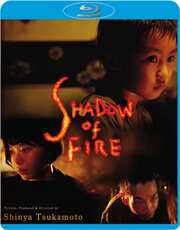
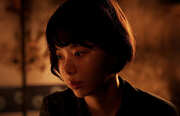
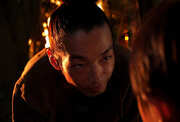

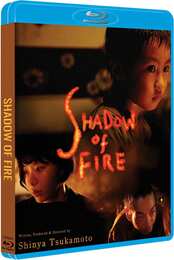
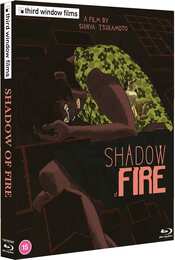
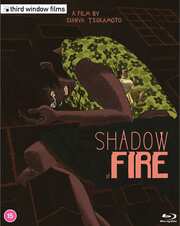
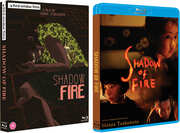


































Your Opinions and Comments
Be the first to post a comment!